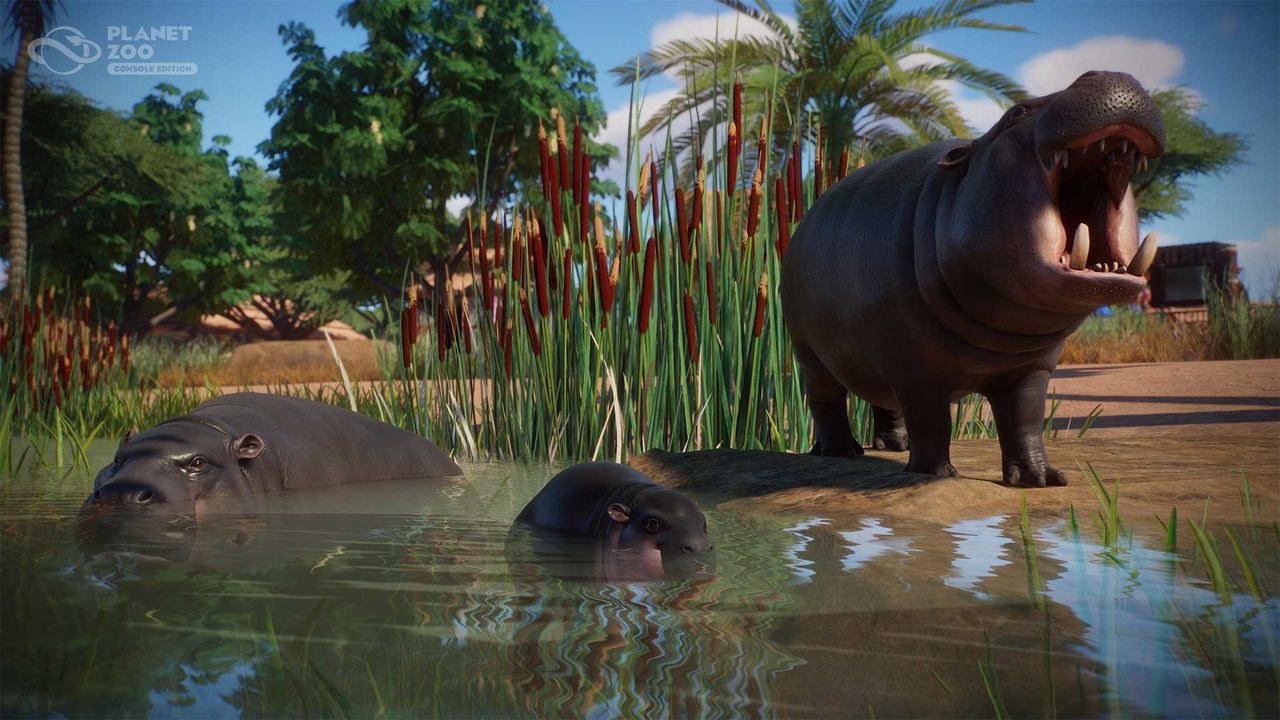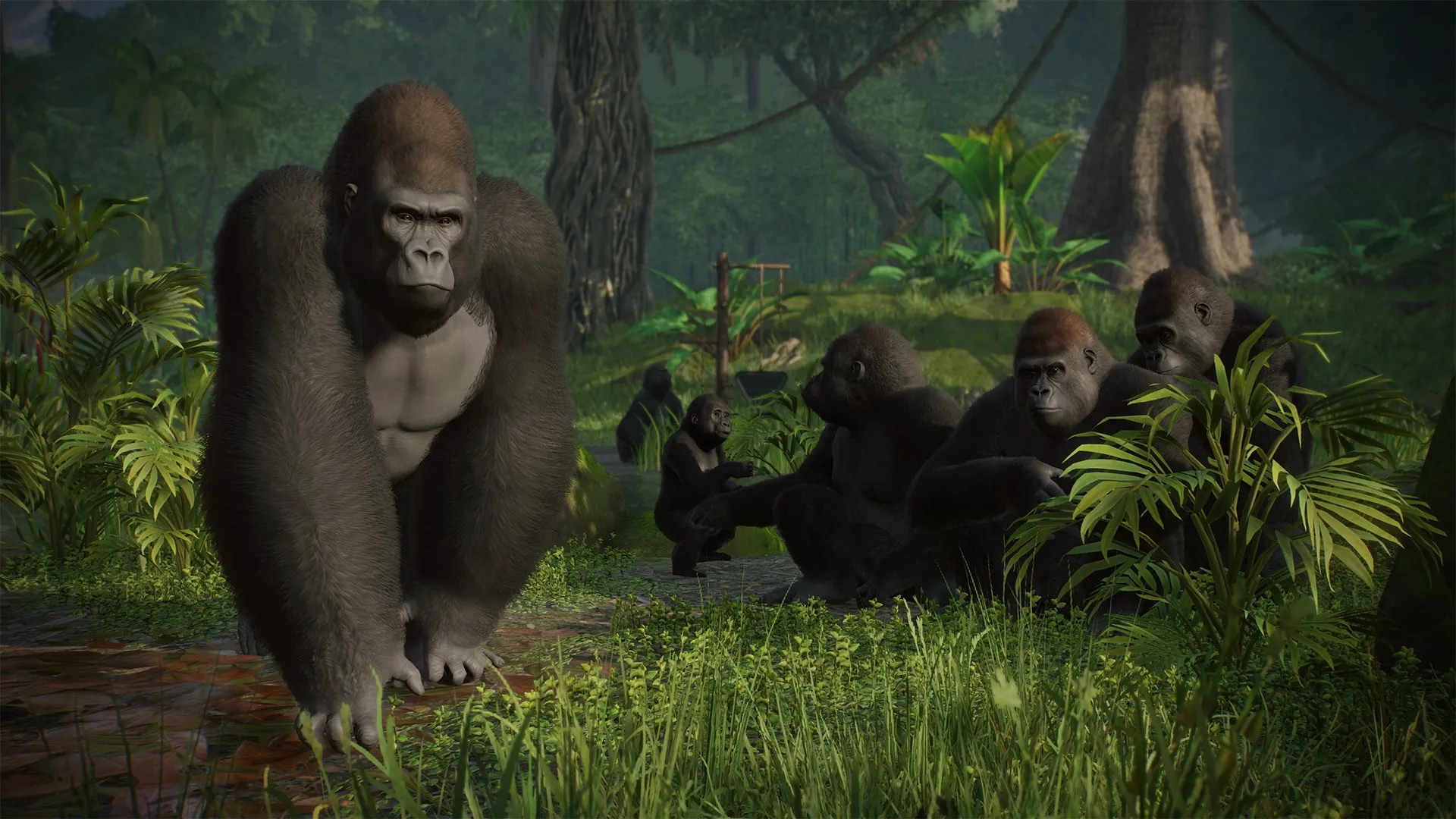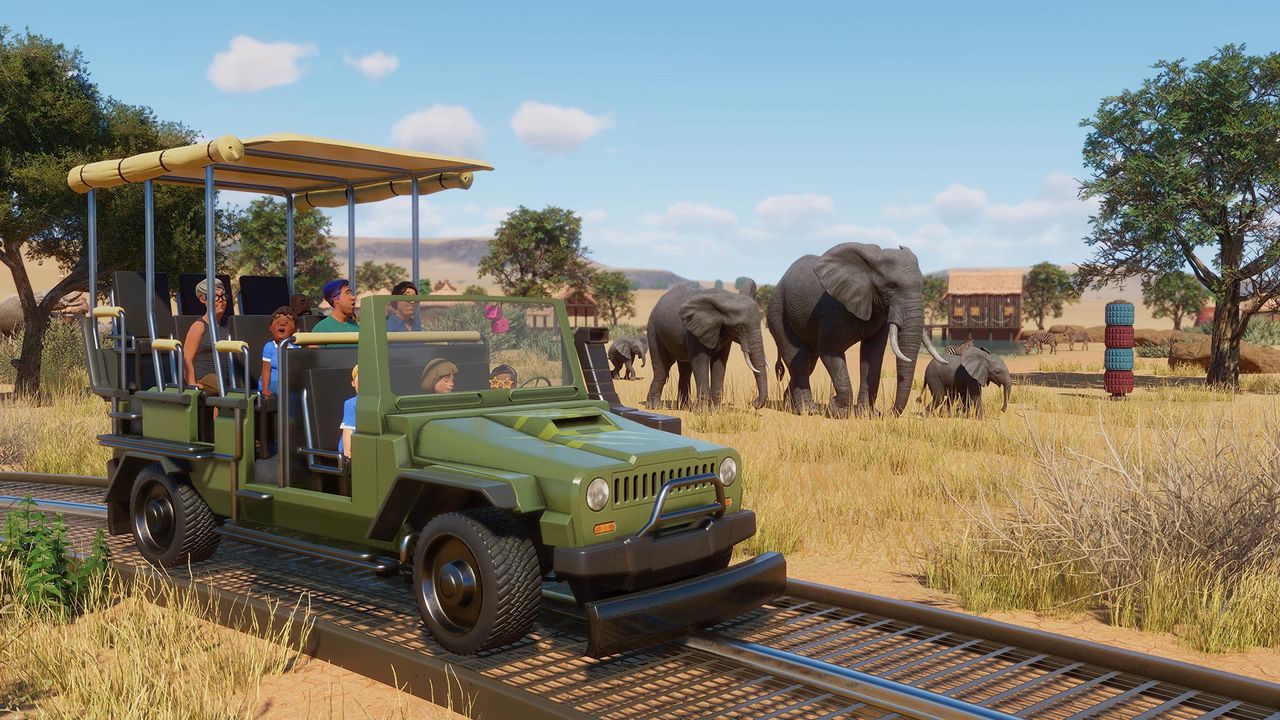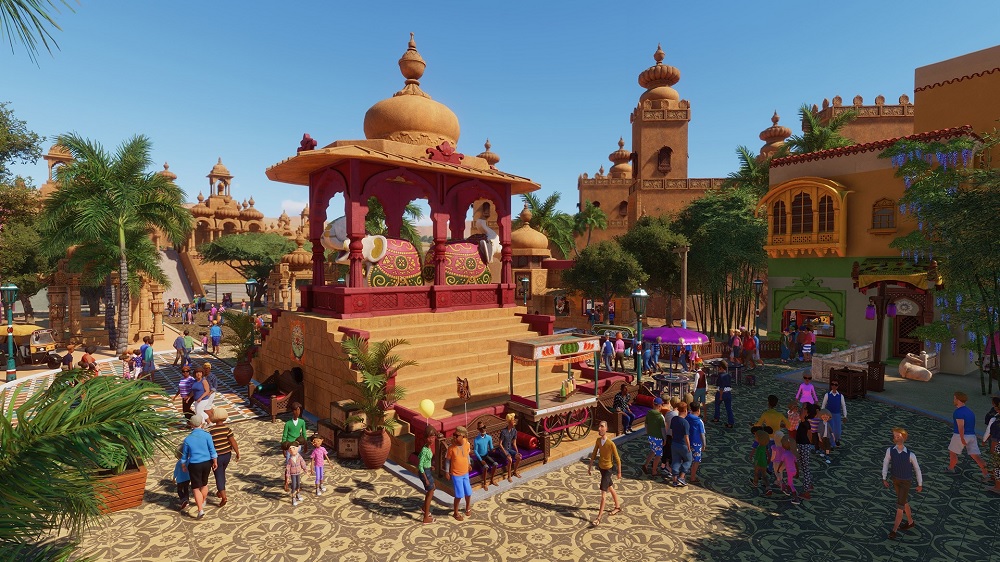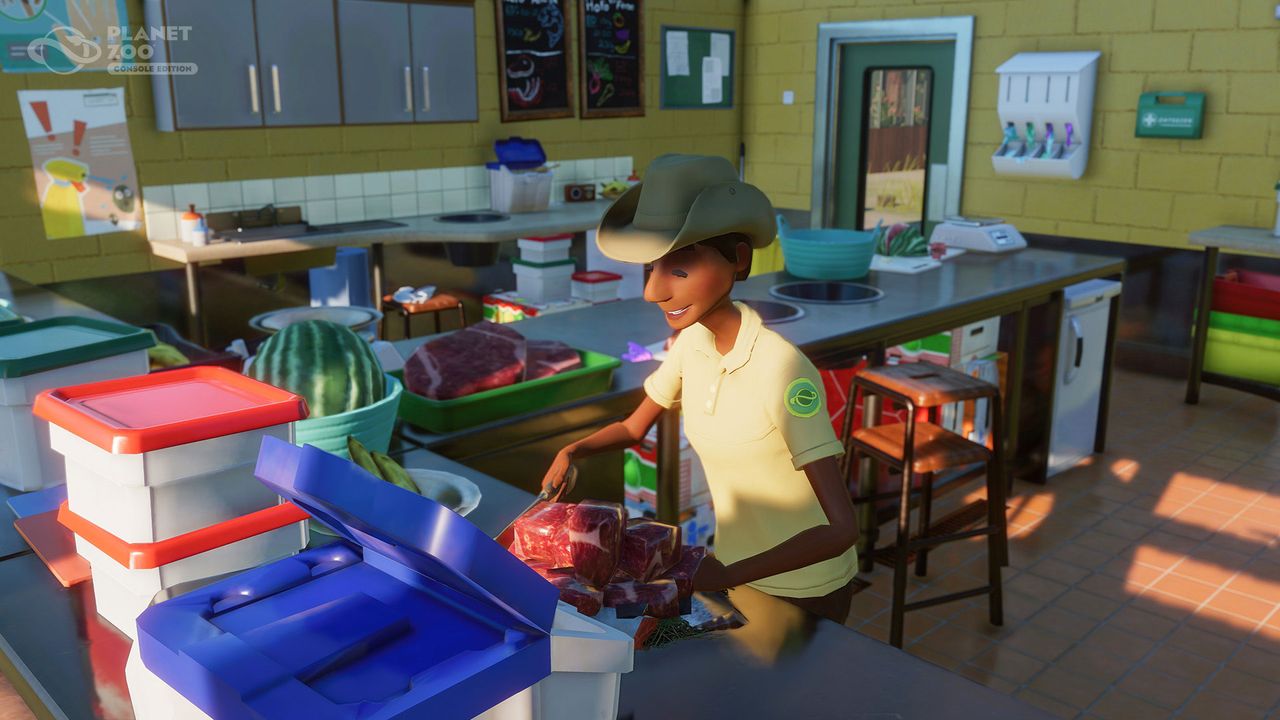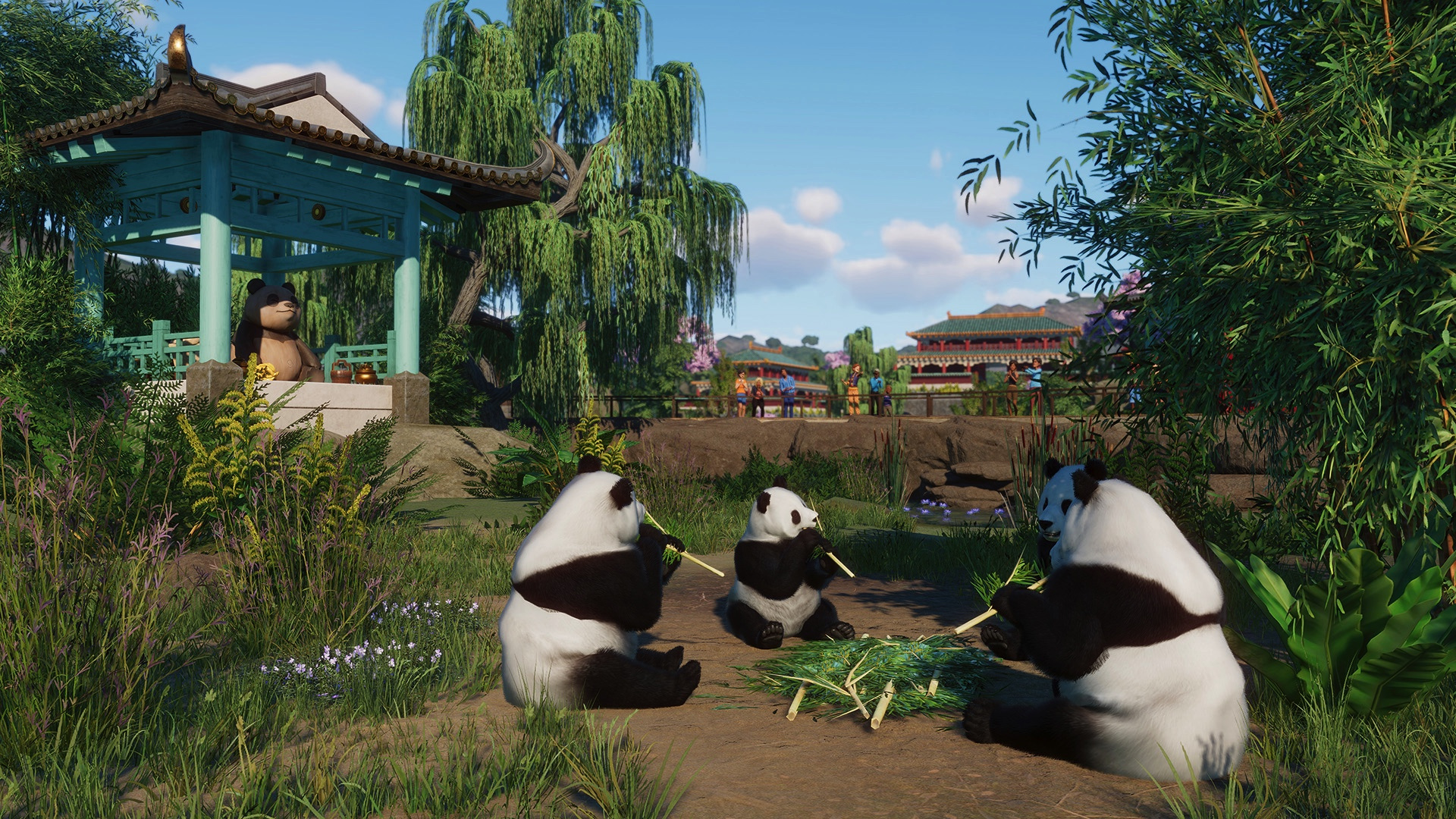Planet Zoo Console Edition PS5 Review
Summary: Frontier brings their most in-depth building sim to consoles, wart(hog)s and all.
4
Runnin' Wild
You’d be surprised at how much time I’ve spent checking the fertility of beetles in Planet Zoo. After all, ensuring a healthy lineage of profitable babies is the quickest way for a new zoo to get going, even if it does feel like it goes against the game’s ethical message. Still, I need that hard-earned cash – and for that – I need animals, so until Greenwood’s Safari is out of the red, an endless supply of money-making bugs is on the horizon.
If you’ve already spent time with Planet Zoo on PC, particularly in Franchise mode, you’ll know what I’m talking about. Planet Zoo is as much about managing cash flow and visitor happiness as it is about keeping your animals fed and disease-free. Lucky for you, Planet Zoo is one of the most in-depth management sims out there, and what’s perhaps most impressive is how well Frontier have managed to make this work on console.
Planet Zoo is a big game, and while this might not be Frontier’s first rodeo when it comes to console management sims, it might be their best attempt yet. Like other sims of this ilk – and many of Frontier’s past titles – the aim of Planet Zoo is to create the best park imaginable for your guests. With over 70 animals in the base game alone and nearly five years worth of free quality-of-life and content updates, Planet Zoo has never been in finer form, with an impressive amount of ways you can customise the experiences of both guest and critter.
There’s barely an aspect of Planet Zoo that can’t be manipulated to your heart’s desire, whether that’s making changes to a menu to your new Chief Beef restaurant or manipulating foliage to craft the zoo of your dreams; it’s an open canvas for you to play around in. Buildings, like staff rooms, toilets and shops can be placed ready to go, but alternatively, you can create them from scratch and let your imagination run wild.
Of course, this does mean it’s incredibly overwhelming, and even if you’re an old hand at management sims, many aspects of Planet Zoo take a long time to get your head around. Thankfully, the game’s Career mode, which acts as a tutorial, does a great job of introducing many of the core aspects of the game at a comfortable pace. Early levels see you fixing dodgy fences on nearly complete zoos. In contrast, later levels give you challenging scenarios, like adopting a certain number of animals or reaching yearly profitability targets. Wrapping up tasks can also open further jobs across each scenario, with each completed mission usually unlocking fun new cosmetics for your future zoos. Even when Career mode moves away from its earlier tutorial-heavy stuff, some of the less restrictive scenarios still trickle in new features and aspects of Planet Zoo, and it’s all done at a pace that genuinely helps players overcome some of the game’s more confusing elements.
These little things set Planet Zoo apart from other management sims, but Planet Zoo’s individuality perhaps shines through best with the game’s impressive list of animals. Each creature has various likes and dislikes, from environmental preferences to social and enrichment needs. Aardvarks, for example, benefit from burrows in their display, while complex, social animals like chimps need ample company and plenty of toys to keep them from succumbing to boredom. Even exhibitions for smaller animals, like snakes and insects, require plenty of fine-tuning, like ensuring each area has enough foliage and hides, or ensuring the humidity for each specific animal is right; you don’t want to attract animal activists, after all.
Frontier has done a fantastic job mimicking real-life behaviour with their computer-generated animals – and when a zoo runs smoothly – it’s a joy to see. Still, by crafting these perfect environments for your pandas, zebras and peacocks, you start to notice areas where Planet Zoo doesn’t always hit the mark. By allowing players so much freedom to craft and create, the game inadvertently becomes too often fiddly and awkward. It’s perhaps most noticeable a problem when placing paths, something that has haunted PC players since the game’s release, and it’s a problem that has followed the game to console. Planet Zoo’s path system is and has always been, terrible, a confusing system of placing walkways only for them to either not join up at all, or leave ugly gaps around your zoo.
It’s not like it’s down to user error, either, as even once you’ve put plenty of time into Planet Zoo’s intricate systems, you still find paths never look quite how you want them to. There are similar issues elsewhere, particularly when trying to keep guests happy. More often than not, you find them complaining about things like generators being too close to public paths, or moaning about your unclean zoo while your cleaners frantically try and keep on top of guests that ignore your many, many bins.
It’s hardly surprising that a game with so much micro-managing has a few annoying quirks now and again – and for casual sim managers who may have tried Frontier’s other titles like Jurassic World Evolution, the game’s magnitude may scare them off – but if you’re willing to invest, Planet Zoo allows you to feel totally in control of your zoo. On the other hand, if you aren’t the type of player who wants to invest hours in circumnavigating umteen bushes to create the perfect floral displays, Planet Zoo comes with access to Frontiers Workshop. Here, fellow zookeepers can upload their blueprints for their creations, ready for other players to use in their zoos. For creative dummies like me, it’s a great way of utilising Planet Zoo’s in-depth systems without having to delve too deep into it yourself. It’s also a great way of discovering just how talented the community is, with players creating everything from stunning, indoor butterfly houses to unique riverboat rides and walkthroughs through animal enclosures.
These creations come in handy when used in one of Planet Zoo’s more open-ended modes; Sandbox, or the previously mentioned Franchise mode. While the former does what it says on the tin, Franchise is one of Planet Zoo’s most interesting areas, allowing players to create a – well – franchise of zoos and parks, where you gain money by buying and selling animals. You do, however, find yourself becoming quite cutthroat here, as the market is riddled with over-priced rare creatures with fantastic stats, often leading you to create shady breeding grounds where you churn out creatures for a quick buck. Questions around ethicality aside, it makes for addictive stuff – and once you get going, you’ll find yourself incredibly satisfied when getting positive feedback from zoo visitors when your hard work finally begins to pay off.
But if you’re finding yourself a little dubious at just how this can work on a controller scheme, rest assured, Planet Zoo doesn’t suffer from a lack of keyboard and mouse at all – in fact, I think I prefer playing on console. Controller mapping is solid and intuitive, and in particular, navigating around feels much easier with joysticks, as opposed to a traditional setup. Playing on a console also allows gamers like me – with their feeble PC setups – a way of experiencing Planet Zoo in all its glory. The game looks stunning, with beautifully rendered animals and a fantastic art style that perfectly compliments the game’s whimsical nature. Frontier has also ensured that the game keeps its optimum performance on consoles by introducing a build limit. While some gamers might be disappointed that their zoos can’t be quite as in-depth as those created by their PC brethren, I never found it restrictive or felt like I had to hold back with any of my creations.
Which is a good thing, especially considering how much content is on the horizon for Planet Zoo console players. It’s safe to say that the game is heading toward the back end of its support cycle, at least where new content is involved, but there’s still lots of DLC to come for new, console-based keepers. Instead of overwhelming players with a bunch of DLC in one go, all previously released content packs are coming to consoles via a season pass, allowing players to sample them slowly rather than overwhelm the player base with an extraordinary amount of content. For anyone who isn’t interested in all the DLC and only wants the Oceania Pack for example, these will still be available separately on release, albeit for a slightly higher price. The latter option will probably work better for most players though, especially if certain packs don’t contain creatures or cosmetics you’re likely to use around your zoos, but the options there for anyone who doesn’t think the base game’s impressive bunch of animals is quite enough for their creations.
Planet Zoo isn’t for casual sim fans. It’s big, it’s complicated and it’s demanding, but it’s also an impressively intricate creativity tool for anyone who grew up wishing Zoo Tycoon had a bit more going for it. With so much content, even more to come, and a fanbase and developer who constantly share their ideas and love for the genre throughout the wonderful Workshop, it’s hard to imagine a simulation doing it better than this.


